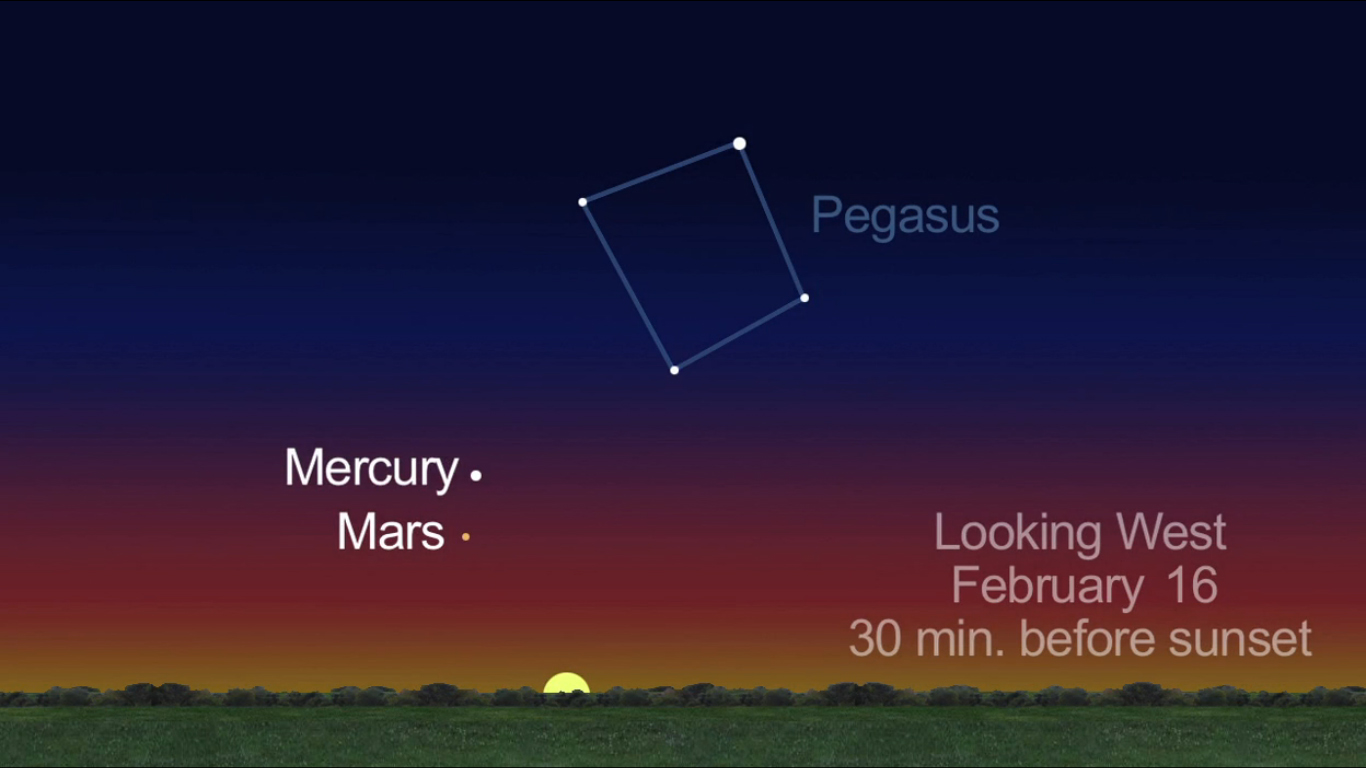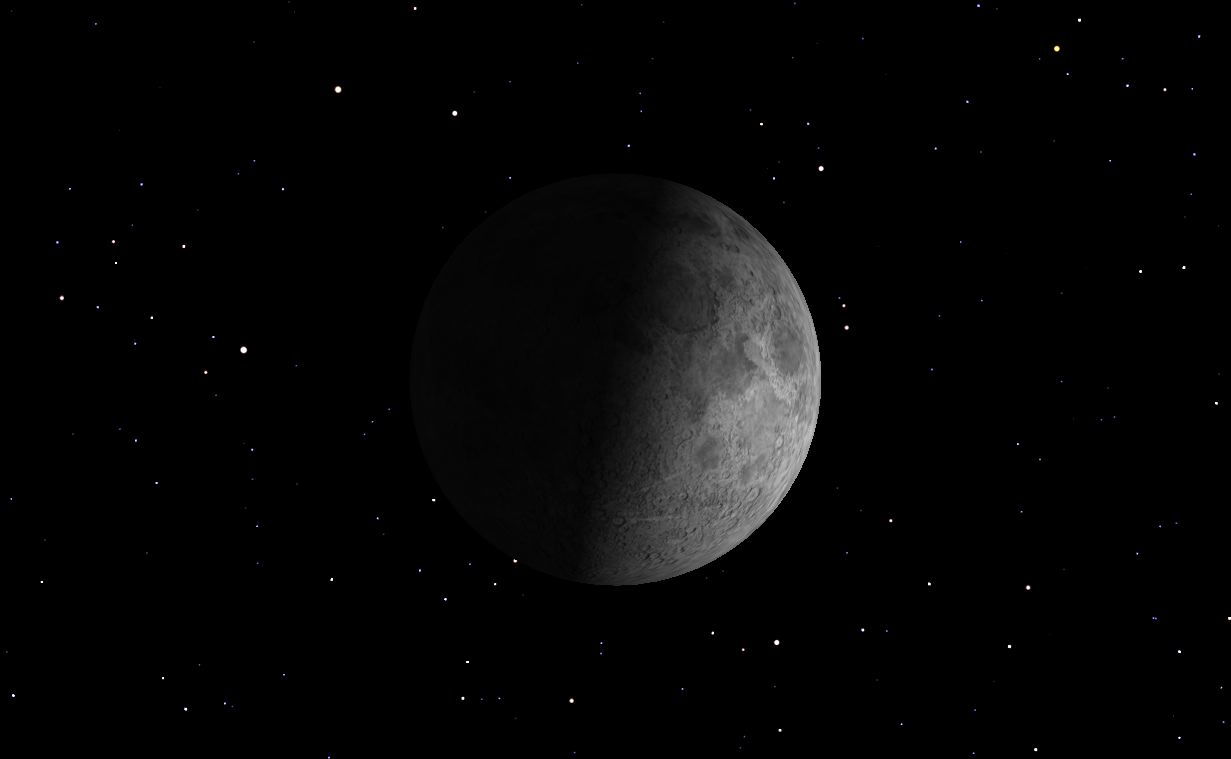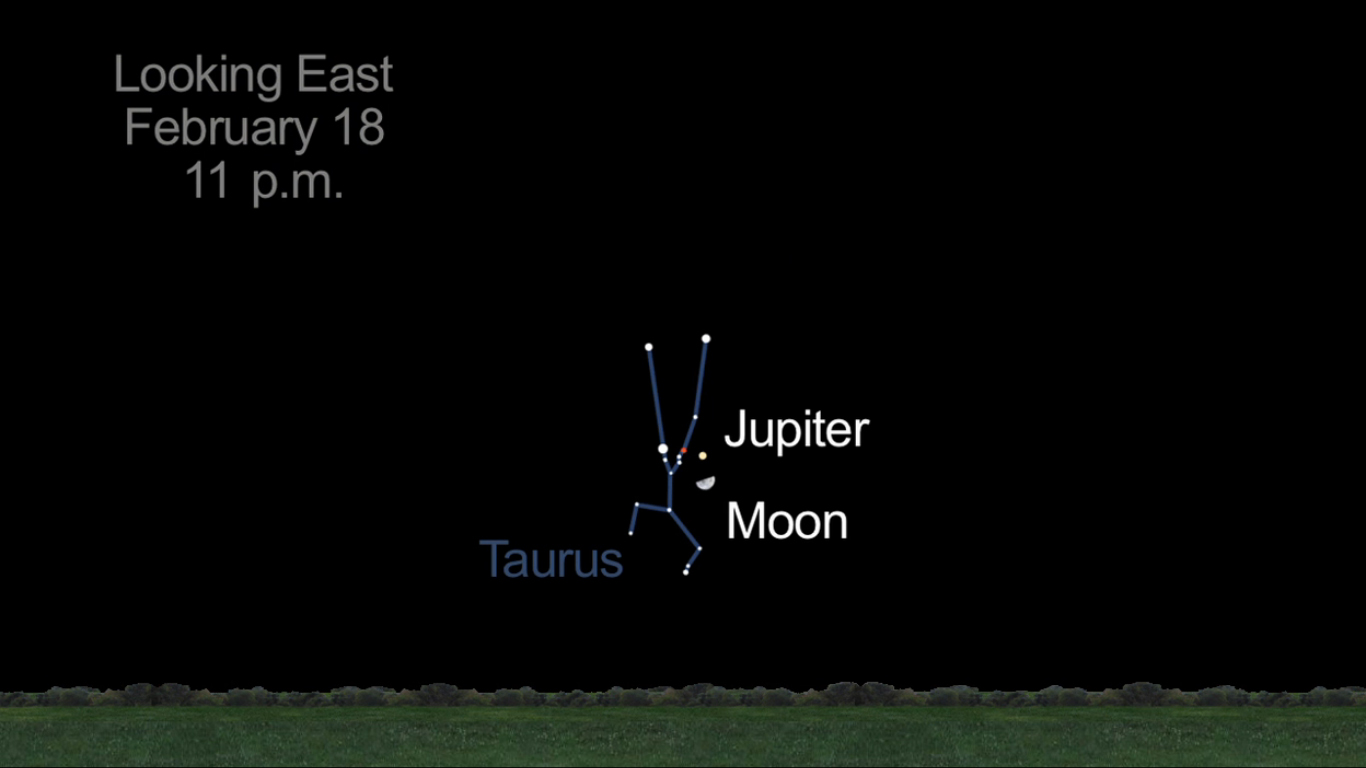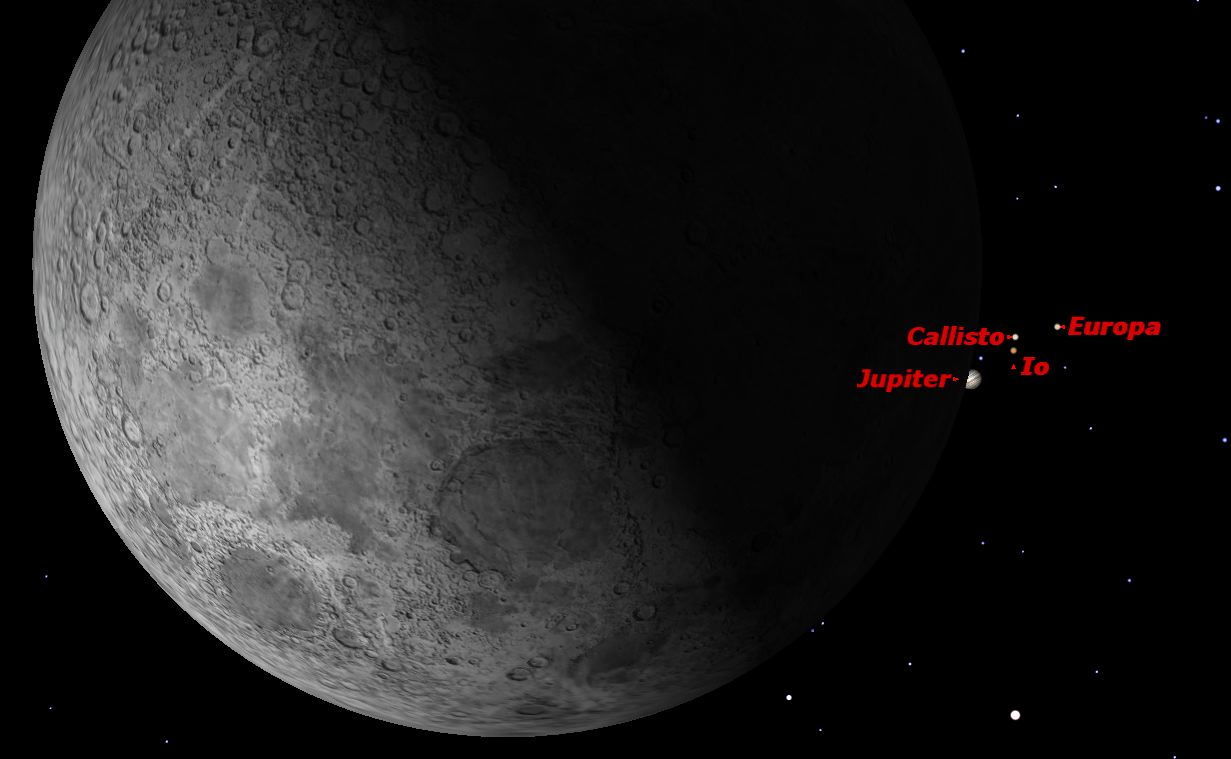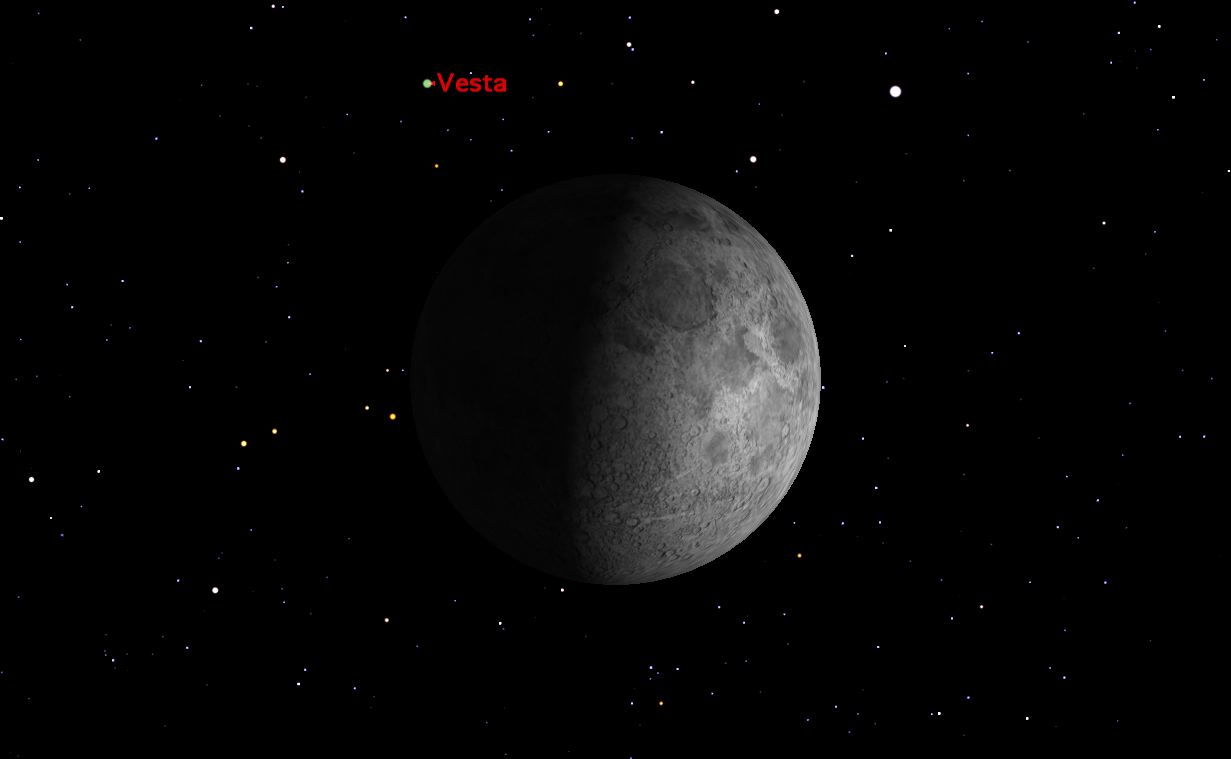Night Sky Observing Guide: February 2013 (Sky Maps)
Mars and Mercury: Feb. 16, 2013
The locations of planets Mercury and. Mars at sunset on Feb. 16, 2013, are shown in this NASA sky map.
Mercury at Greatest Elongation East, February 2013
Sat., Feb. 16, evening twilight. This is the best opportunity this year for observers in the Northern Hemisphere to observe Mercury in the evening sky. Sweep the western horizon with binoculars to pick up Mercury’s tiny speck of light.
First Quarter Moon, February 2013
On Sun., Feb. 17, 3:31 p.m. EST, the first quarter moon rises around 11 a.m. and sets around 2 a.m. It dominates the evening sky
Jupiter and Moon Together: Feb. 18, 2013
This NASA graphic depicts the location of the planet Jupiter and the moon as they will appear close together in the eastern night sky at 11 p.m. (your local time) on Feb. 18, 2013.
Jupiter and the Moon, February 2013
Mon., Feb. 18, early evening. Another close conjunction between Jupiter and the Moon, flanked by Aldebaran and the Hyades to the left and the Pleiades to the right. The Moon will actually pass in front of Jupiter for viewers in the southern Indian Ocean. Southern Australia and Tasmania. Shown here is the view from Melbourne, Australia.
Vesta and the Moon, February 2013
Mon., Feb. 18, early evening. The moon will pass just south of the bright asteroid Vesta, making it easier to locate than usual. The moon will occult Vesta as seen from central South America and much of western and southern Africa.
Jupiter and Moon Together: Feb. 19, 2013
This NASA graphic depicts the location of the planet Jupiter and the moon as they will appear close together in the eastern night sky just after midnight on Feb. 19, 2013.
Breaking space news, the latest updates on rocket launches, skywatching events and more!
Full Moon, February 2013
Mon., Feb. 25, 3:26 p.m. EST. The full moon of February is called the Snow Moon. Its Cree name is Cepizun, meaning “old moon.” Other names are Hunger Moon, Storm Moon and Candles Moon. In Hindi it is known as Magh Poornima. Its Sinhala (Buddhist) name is Navam. The full moon rises around sunset and sets around sunrise, the only night in the month when the moon is in the sky all night long. The rest of the month, the moon spends at least some time in the daytime sky.

Space.com is the premier source of space exploration, innovation and astronomy news, chronicling (and celebrating) humanity's ongoing expansion across the final frontier. Originally founded in 1999, Space.com is, and always has been, the passion of writers and editors who are space fans and also trained journalists. Our current news team consists of Editor-in-Chief Tariq Malik; Editor Hanneke Weitering, Senior Space Writer Mike Wall; Senior Writer Meghan Bartels; Senior Writer Chelsea Gohd, Senior Writer Tereza Pultarova and Staff Writer Alexander Cox, focusing on e-commerce. Senior Producer Steve Spaleta oversees our space videos, with Diana Whitcroft as our Social Media Editor.
